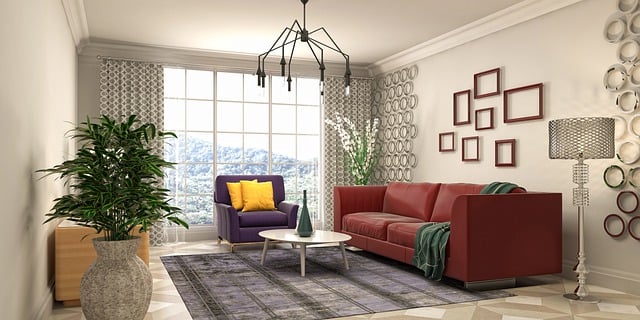In virtual and augmented reality, room layout modeling combines precise 3D mapping with advanced textures and lighting to create immersive experiences mirroring physical spaces. This technique, crucial for education and architecture, enhances audience engagement, comprehension, and information retention by recreating realistic environments with intricate details and dynamic lighting effects. Artists use technical expertise and texturing methods like procedural mapping to achieve high-fidelity textures, while strategic lighting placement adds depth and believability, transforming digital content into compelling, interactive experiences across industries.
In today’s digital era, immersive presentations are transforming how we experience content. For a truly captivating session, incorporating realistic textures and lighting effects is paramount. This article explores the profound impact of these elements on audience engagement. We delve into room layout modeling as a powerful tool for creating immersive environments, and examine techniques for crafting authentic textures along with best practices for lighting design. By the end, you’ll understand how to enhance presentations with visuals that captivate and engage.
Understanding the Impact of Textures and Lighting in Presentations
In the realm of presentations, especially those involving virtual or augmented reality, textures and lighting play a pivotal role in fostering immersion. Realistic room layout modeling demands an attention to detail that goes beyond mere visuals; it involves replicating the sensorial experiences associated with physical spaces. Textures, when accurately rendered, can convey the roughness or smoothness of surfaces, adding depth and credibility to digital environments. Lighting effects, on the other hand, not only illuminate scenes but also set mood, enhance contrast, and cast shadows that mimic natural light interactions, making virtual settings appear more authentic.
The impact of these elements is profound; they can make or break the believability of a digital presentation. Well-designed textures and lighting effects contribute to spatial perception, allowing viewers to intuitively grasp the scale and layout of a room. This immersive experience not only captivates audiences but also facilitates better comprehension and retention of presented information, particularly in educational or architectural contexts where realism is paramount.
Room Layout Modeling: A Powerful Tool for Immersive Experiences
Room Layout Modeling is a cutting-edge technique that significantly enhances immersive presentations by recreating the spatial dimensions and visual cues of a real environment. This powerful tool allows designers to craft 3D models of rooms, offices, or any desired space, complete with accurate textures and lighting effects. By virtually placing audience members within this digital setting, presenters can offer a more engaging and realistic experience compared to traditional flat designs.
The process involves intricate mapping and modeling techniques, ensuring that every detail, from furniture arrangements to architectural features, is accurately represented. This level of realism creates an immersive atmosphere where users feel truly present in the virtual space, thereby boosting their engagement and interaction with the presentation content. Room Layout Modeling is a game-changer for various industries, revolutionizing how we experience digital environments and presentations.
Creating Realistic Textures: Techniques and Best Practices
Creating realistic textures involves a blend of artistic skill and technical expertise. To achieve this, 3D artists often employ advanced texturing techniques such as procedural mapping, where algorithms generate complex patterns mimicking natural materials like wood grain, fabric wrinkles, or metal textures. Another powerful method is using high-resolution reference images, carefully mapped onto 3D models to capture intricate details.
Best practices include optimizing texture quality for the target display resolution, ensuring seamless transitions between different material types, and avoiding visible artifacting. Room layout modeling plays a crucial role here by allowing artists to craft detailed environments with accurate scaling and lighting interactions, enhancing the realism of the textures.
Masterful Use of Lighting Effects for Enhanced Immersion
The strategic deployment of lighting effects within a virtual environment plays a pivotal role in creating an immersive experience. By meticulously modeling the room layout and incorporating realistic light sources, developers can craft atmospheres that engage users on a deeper level. This involves not only simulating natural light but also understanding how artificial lights interact with various surfaces, from walls and furniture to textures in the background.
Through advanced techniques, lighting can be used to accentuate details, cast subtle shadows, or dramatically transform spaces, thereby enhancing the overall believability of the virtual setting. Careful consideration of light direction, intensity, and color temperature allows for a dynamic environment that responds to user actions and changes throughout the presentation, thus fostering a truly immersive experience.
Realistic textures and lighting effects are pivotal in creating immersive presentations that captivate audiences. By leveraging techniques like room layout modeling and understanding the impact of visual elements, professionals can craft compelling experiences. These tools enable designers to showcase products or concepts in a lifelike setting, fostering deeper engagement and better comprehension. Incorporating best practices for texture creation and masterful lighting design ensures presentations stand out, leaving a lasting impression on viewers.
